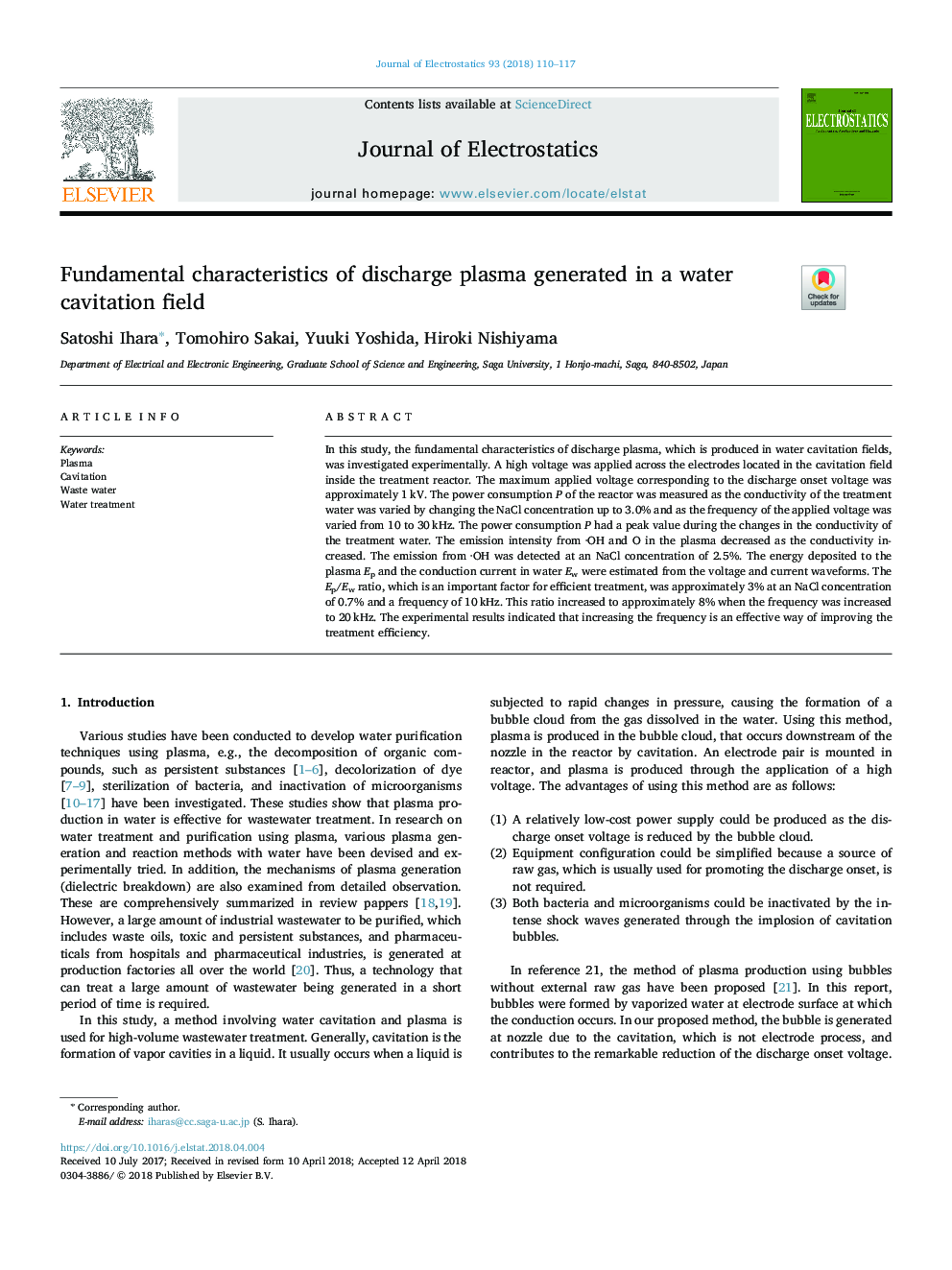| Article ID | Journal | Published Year | Pages | File Type |
|---|---|---|---|---|
| 7117128 | Journal of Electrostatics | 2018 | 8 Pages |
Abstract
In this study, the fundamental characteristics of discharge plasma, which is produced in water cavitation fields, was investigated experimentally. A high voltage was applied across the electrodes located in the cavitation field inside the treatment reactor. The maximum applied voltage corresponding to the discharge onset voltage was approximately 1â¯kV. The power consumption P of the reactor was measured as the conductivity of the treatment water was varied by changing the NaCl concentration up to 3.0% and as the frequency of the applied voltage was varied from 10 to 30â¯kHz. The power consumption P had a peak value during the changes in the conductivity of the treatment water. The emission intensity from ·OH and O in the plasma decreased as the conductivity increased. The emission from ·OH was detected at an NaCl concentration of 2.5%. The energy deposited to the plasma Ep and the conduction current in water Ew were estimated from the voltage and current waveforms. The Ep/Ew ratio, which is an important factor for efficient treatment, was approximately 3% at an NaCl concentration of 0.7% and a frequency of 10â¯kHz. This ratio increased to approximately 8% when the frequency was increased to 20â¯kHz. The experimental results indicated that increasing the frequency is an effective way of improving the treatment efficiency.
Related Topics
Physical Sciences and Engineering
Engineering
Electrical and Electronic Engineering
Authors
Satoshi Ihara, Tomohiro Sakai, Yuuki Yoshida, Hiroki Nishiyama,
